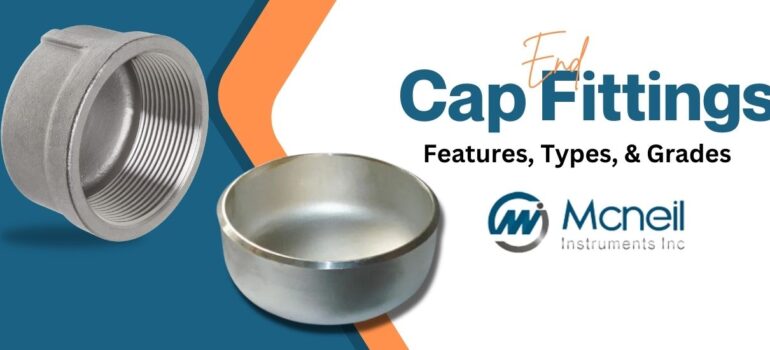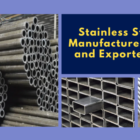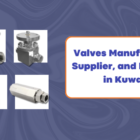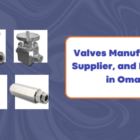Features, Types, & Grades of End Cap Pipe Fittings
Pipe caps are made to cover pipe ends of various forms and serve as a protective measure. End Cap Pipe Fittings are mostly used to waterproof the connections. Additionally, they are employed to seal the extremities of hydraulic or pneumatic pipelines and tubes. They are utilized in the machinery, processing equipment, and plumbing systems for home, commercial, and industrial water supply lines. Additionally, they are installed on water pump lines with the express objective of eliminating air obstructions. Pipe caps are a significant class of pipe fittings that are in great demand.
Pipe End Caps are a particular kind of fitting that are mostly utilized to cover a pipe end. This prevents the entry of impurities such as water, dampness, dust, and others. Additionally, it aids in avoiding material damage. Devices called pipe end caps aid in protecting the pipe ends. They come in a variety of forms and sizes and are constructed from a variety of materials. End cap pipe fittings typically have a tear tab or strip to make removal simple. They assist in lowering pressure dips and maintaining the cleanliness of a pipe’s inside in addition to safeguarding the end.
Pipes End Capes Grades & Material Used:
Aluminum and steel are two materials that are frequently utilized in manufacturing. They are both extremely strong and bendable. Steel is more difficult to work with than aluminum. Monel Pipe End Caps are ideal for usage on components of high-volume manufacturing lines. For lighter-weight piping, particularly that which is flexible enough to be provided in coiled form, nickel alloy pipe end caps are occasionally utilized. Inconel Pipe End Caps are excellent for point-of-purchase displays, racks, shipment protection, dust coverings, and other finishing applications on metal items. Another common material for end caps is rubber. They are employed in many different processes, including as masking, temporary covering, and pumping.
The buyer should constantly consider the material of the fitting before choosing pipe caps since a wide range of materials are utilized to make pipe caps. Among the frequently utilized materials are:
Stainless Steel Pipe End Caps: ASTM A403 WP316/316L, ASTM A403 SA / A 774 WP-S, WP-W, WP-WX 304/304L, ASTM A182 F316L, 304L, DIN 1.4301, DIN1.4306, DIN 1.4401, DIN 1.4404
Duplex & Super Duplex Steel Pipe End Caps: ASTM A 815, ASME SA 815 UNS NO S31803, S32205. UNS S32750, S32950. Werkstoff No. 1.4462
Carbon Steel Pipe End Caps: ASTM A234, ASME SA234 WPB, WPBW, WPHY 42, WPHY 46, WPHY 52, WPH 60, WPHY 65 & WPHY 70.
Alloy Steel Pipe End Caps: ASTM A234, ASME SA234 WP1 / WP5 / WP9 / WP11 / WP22 / WP91
Nickel Alloy Pipe End Caps: ASTM B336, ASME SB336, Nickel 200 (UNS No. No2200), Nickel 201 (UNS No. N02201), Monel 400 (UNS No. N04400), Monel 500 (UNS No. N05500), Inconel 800 (UNS No. N08800), Inconel 825 (UNS No. N08825), Inconel 600 (UNS No. N06600), Inconel 625 (UNS No. N06625), Inconel 601 (UNS No. N06601), Hastelloy C 276 (UNS No. N10276), Alloy 20 (UNS No. N08020), Titanium (Grade I & II), Cupro-Nickel 70/30, CuNi10Fe1Mn, CuNi30Mn1Fe.
Low Temperature Carbon Steel Pipe End Caps: ASTM A420 WPL3, A420 WPL6
Different Features of End Cap Pipe Fittings
Before purchasing pipe caps in bulk, the buyer should take into account a number of crucial criteria. The following crucial requirements must be taken into account:
NPT (National Pipe Thread) size: This characteristic is appropriate for caps with a round form when the item that has to be protected has a male NPT thread.
BSP (British Standard Pipe) size: This size choice is only appropriate for caps with a round form and a male BSP thread on the item to be capped.
Diameter: Only round caps and plugs may be made with this crucial size. The primary thread diameter is the most crucial factor to take into account when fittings have straight threads. However, when a cap, plug, or item to be capped has a tapered (NPT or BSP) thread, its size is not a crucial factor to take into account.
Shape: The size and shape of pipe caps are other crucial factors to take into account. distinct pipe caps have distinct features. Features include:
- Round Caps: The flange, slotted head, knurled or faceted head, retaining head, and tear tab are all common characteristics of round caps. A flange is designed to make it simple to remove pipes or tubes or to provide additional protection. Additionally, flanges aid in preventing inadvertent plug ejection through the aperture. A screwdriver makes it simple to put on or take off slotted caps. Typically, only threaded caps and plugs are intended to be used with knurled or faceted heads. Installation and removal are hassle-free using facets or knurls. It is simple to remove pipe caps that have a tear-tab or strip supplied.
- Square or Rectangular Cap: When choosing a square or rectangular cap, the length and breadth should be taken into account the most. For square caps, the length and breadth are the same dimension, but the width is the smaller cross sectional measurement for rectangular caps.
Types of End Cap Pipe Fittings
There are many various varieties of pipe caps, and the type varies depending on the use. The correct sort of pipe cap must be known by the customer since pipe caps differ according to their construction features. Pipe caps come in the following varieties based on their construction:
Threaded End Cap Pipe Fittings
The threads on these caps are female. The thread, commonly known as an NPT, can be straight or tapered. often, plugs have a male thread, whereas caps often have a female thread. A threaded fitting called an ASME B16.11 threaded cap is often liquid or gas tight. Threaded Pipe Caps assist in resisting repeated tightening cycles that cause threads to loosen during drilling. Depending on the needs, a threaded end cap can be screwed or welded on a pipe.
Tapered End Cap Pipe Fittings
These hats’ tapering sides provide a snug fit. Some of these fittings have two different uses: as plugs or as caps. Male and female NPT threads, straight tubes and bars, and male straight threads all work well with tapered caps and plugs due to their versatility. These fittings have a tapered body to offer a solid friction fit and to make removal simple.
Anti-roll End Cap Pipe Fittings
These caps have a somewhat square end and a circular shape. Rolling pipes and tubes are stopped as a result. When shipping expensive merchandise at work or on the job, anti-roll caps can be used to safeguard the ends of a shaft, tube, pipe, fitting, connector, screw, bar, or any other shape. They are a specially designed vinyl plastic cap with square ends to prevent rolling.
Conclusion
Pipe caps are essential protective measures for pipe ends, used to waterproof connections, seal hydraulic or pneumatic pipelines, and prevent material damage. They come in various forms and sizes and are made from various materials, such as aluminum, steel, nickel alloy, Inconel, rubber, and more. There are various types of pipe caps, including threaded, tapered, and anti-roll end caps. Threaded caps have female threads, while tapered caps provide a snug fit and can be screwed or welded on a pipe. Anti-roll caps have a slightly square end and circular shape, preventing rolling pipes and tubes from being obstructed. Mcneil instruments Inc. is one of the best Manufacturer, Supplier, & Exporter of End Cap Pipe Fittings in India.






